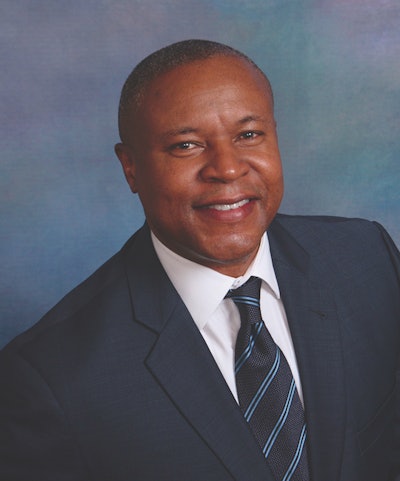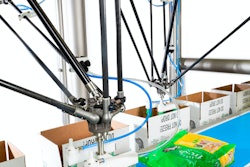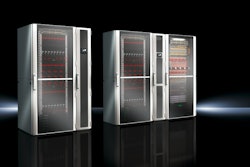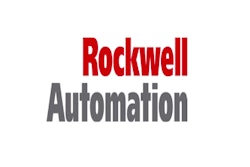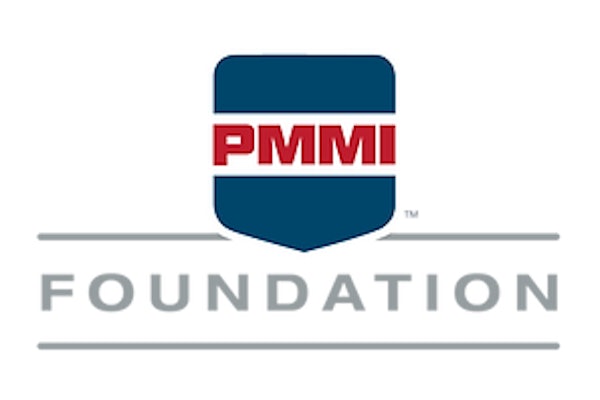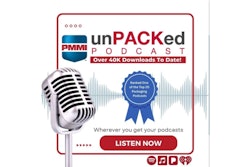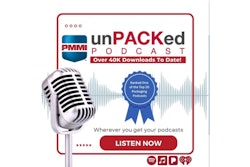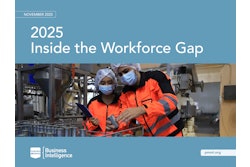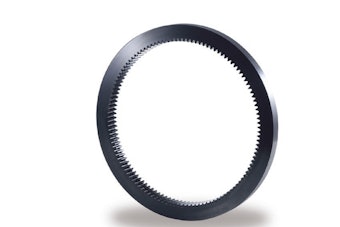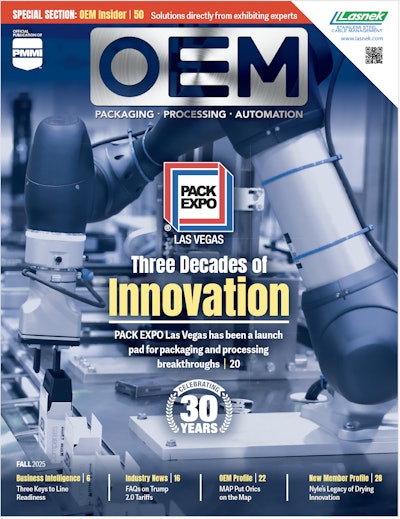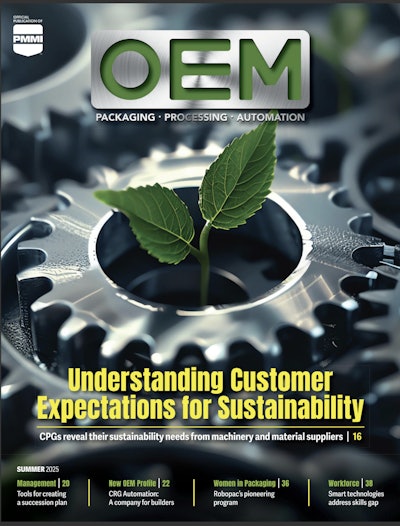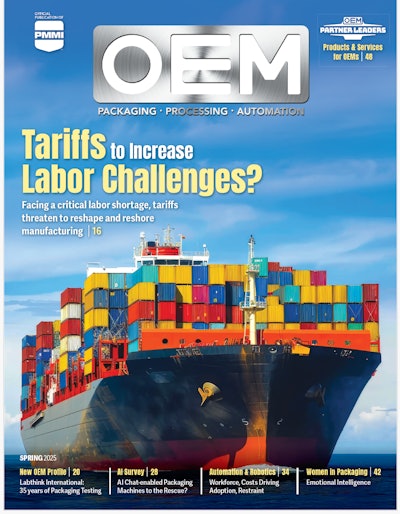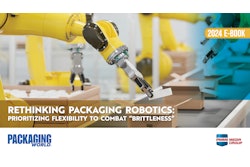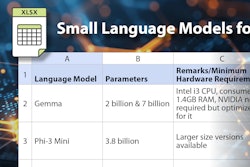After more than two decades on the OEM side, Robert Champion moved to the customer side, working in packaging equipment engineering for CPGs companies before landing in his current position as group packaging equipment engineering manager for Nestlé USA, Glendale, Calif. He is responsible for packaging equipment from capital packaging equipment investments to the existing asset base. Champion is able to offer a truly unique perspective to PP-OEM’s Voice of the Customer series, having sat on both sides of the table.
PP-OEM: How do you think your background with OEMs has helped you now that you are with a CPG?
It benefits the OEMs that I deal with, and it benefits Nestlé. I’m able to translate consumer expectations into our manufacturing operations and upstream to our OEM’s. From an OEM standpoint, I am familiar with the pains an OEM goes through delivering to multinationals: the request for compliance to varied industry regulations whether U.S. or globally based, how an OEM can be profitable and at the same time deliver uniqueness to different CPGs, e.g. Nestlé. Finally, I see things through a wide spectrum across manufacturing performance, marketing insights, etc., while harmonizing Nestlé’s drive to continually delight our consumers.
PP-OEM: What is Nestlé looking for out of a packaging or processing OEM?
Safety is Nestlé’s top priority. Our most important goal is to allow our employees to come to work and return to their families unharmed. We need our suppliers to take safety to heart in their equipment design and really look at the regulatory guidelines per region or per country. Food safety is equally important. We are producing products that start in processing, go through the packaging process and are then distributed to our consumers. Nestlé is looking for two to three fundamental things out of a packaging and a processing OEM. Our top priority is operational excellence. Operational excellence means something different today than it did 10 years ago. From our perspective, it means our production associates, whether supervisors, line operators, or maintenance team members, have the ability to know instantaneously the equipment is in planned working conditions in processing and packaging. Generally this is demonstrated during the factory acceptance test (FAT) and site acceptance test (SAT) all criteria passes then into production. We want to sustain the performance excellence from the acceptance criteria in year one through year X. This means the machine or system must have methods designed into it so that an operator can quickly see when things get out of basic conditions. The second is what I call machine “center-lining.” This provides a clear view of the machine conditions, giving the operator the diagnostics and condition before something goes into an unproductive state. Our lines should produce X rate per hour and if we are not achieving that, we want to know sooner rather than later that we are trending negatively against our goal. The real area of interest here is having key performance indicators on the line. Leading indicators allow us to maintain operational excellence and help manage our costs to produce quality products for our consumers. Finally, the OEMs must have a vision into the consumer marketplace. The competitive marketplace we all deliver to requires the OEMs to invest in R&D. This means you are delivering a system that must take into account the capabilities of operators and material science as well as the interface between the three. We are no longer buying silo entities—we are buying a system that must work well with upstream and downstream assets.
PP-OEM: At its simplest, you want to know early rather than later once things go haywire?
Yes, that is where OEMs can build a strategic advantage. We do not want systems that go haywire. Nestlé wants OEMs that offer operational excellence. We look at suppliers that understand our product lines across our diverse categories and our markets. I look at suppliers that have a pulse for the consumer. We are marketing to millennials, baby boomers and generation X, generation Y and whatever the next generation will be called. We must make sure that we can deliver what these distinct groups are looking for and deliver it promptly. So we need an OEM that also has developed a strategy for the same groups. Everyone should be in the same orchestra, looking at the big spectrum of these groups and saying, “what do they need?”
PP-OEM: Could you walk me through your process for selecting OEM partners?
Nestlé uses a global process for selecting OEMs. We look for suppliers that can deliver to all of our markets, as many of our markets cater to different demographic needs. Hence, our system needs are diverse. From a procurement side, we purchase many systems annually and like to use our scale from a capital spend standpoint. We make sure we are spending our money wisely for a good return on our investment. Total cost of ownership is important. Technically, we look at processing and packaging equipment on a global and regional base. With that in mind, we are looking for technical advantages. We look for suppliers that have both global and regional technical support and that have great training in packaging and processing as part of their operation. This is a key area of interest in our selection of an OEM because it enables our teams to build and retain capability on all shifts.
PP-OEM: Do you mean on a local or regional level for each of your global operations?
We need local training within the region. It is important from both a cost standpoint as well as from our ability to access technicians who can respond quickly.
PP-OEM: What is the biggest pain point when dealing with OEMs?
The challenge with the OEM is getting them to understand what flexibility means to a CPG like Nestlé. Let’s say I am running a flexible package that is a certain size and I want to move to a different size of a flexible package that may have different features. Those SKUs may not initially be high volume for our business, but they enable us get into a market or category. With this scenario, I am looking for OEMs that can design for that flexibility, and one that I can purchase as an option without compromising operational excellence. What the OEMs must do is ask the right questions at the table before they will receive a purchase order for capital equipment. We look for focus around the questions of safety, performance, operational excellence, maintaining product quality and training. The training piece must be tailored to enable our diverse operator teams that are running the lines to retain the knowledge because our operator base is made up of many different groups—millennials, generation-Xers, and baby boomers.
PP-OEM: Would you say the secret to success for OEMs looking to work with Nestlé or similar large multinationals is to ask you these questions ahead of time?
Yes. Success with Nestlé ultimately comes down to understanding safety (food & people), understanding operational excellence, and understanding our consumer base. It doesn’t mean just conducting the performance tests at their site or passing initial acceptance upon installation. It means excellence after running that system in the factories, shift after shift, every day, every week, every month, year after year. It means the equipment must work in harmony with our cleaning systems so that we can ensure food safety. Another challenge we have with OEMs is one that most large CPGs face. When, working with CPGs like Nestlé, our operations could change and strategically we may decide to run our factory differently for a period of time. In these circumstances, the system must be robust enough to effectively handle those changes while maintaining our safety, quality, and asset intensity expectations. In addition, the OEM need to adapt our preventive maintenance schedule to our new run conditions. That’s why supplier engagement needs to continue from the installation through year one, year two, year three, etc. They should be checking in with, say, our packaging engineering group to see how we are doing across all categories and all of our brands. OEMs need our feedback to understand where we want to go in the years ahead. If our plans change, we must change, and we need to communicate those changes to our OEMs so that we’re aligned and our systems are prepared for the change. We must be ahead of the curve when it comes to what consumers want so that we don’t miss an opportunity to meet their needs because the equipment wasn’t ready or the supplier was unfamiliar with trends in the market.
PP-OEM: Are there any other particular things that OEMs could be doing or haven’t been able to do for you that you wish they could?
We want our OEM suppliers to think “system” when presenting us with options and not treat it as just selling us a piece of equipment. This means that the new line or piece of equipment must be designed to encompass both what’s upstream and downstream in the process. That’s a real big gap I see across some suppliers. Many times, OEMs do not ask the right questions about this context. We can always strengthen the communication piece of systems integration between our suppliers and ourselves. The automation or controls of a particular line must be understood in the bidding process, and application request for new and existing suppliers to ensure successful line operations. This aspect is difficult at times to put in writing, which is why the technical review meetings are extremely important. When you have review meetings, you find such surprises as one party didn’t know that the other meant European specifications instead of U.S. specifications. This is where OEMs can help us both overcome a lot of headaches. In our point of view, staying on the playing field is not about simply staying cost-competitive but also staying focused on operational excellence after the sale.
